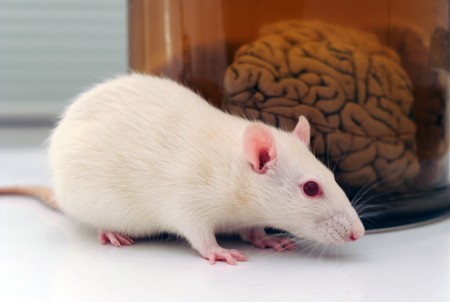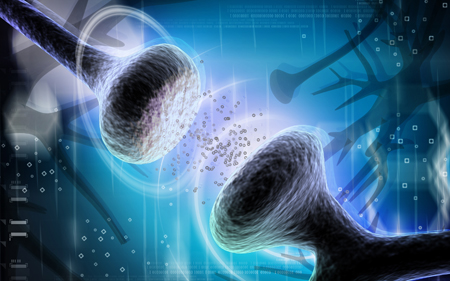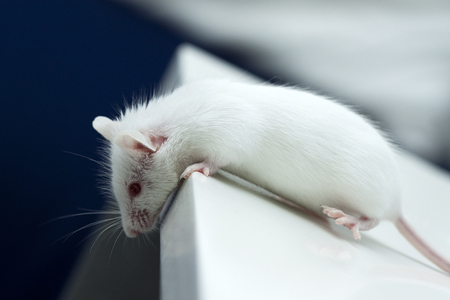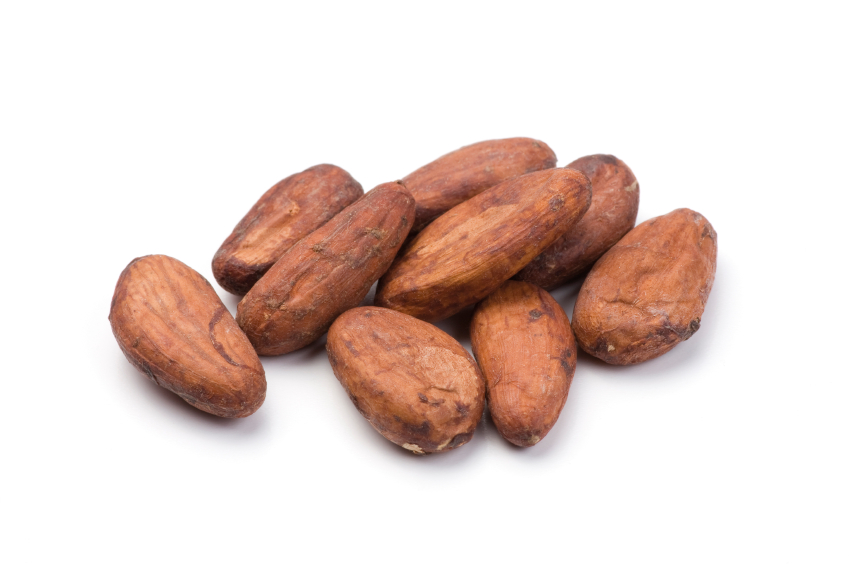Cinnamon Improves Memory in Mice
A recent study found that mice that ate more cinnamon got better and faster at learning. In the study, published in the Journal of Neuroimmune Pharmacology in 2016, separated mice into good learners and poor learners based on how easily they navigated a maze to find food. After the poor learners were fed cinnamon for a month, they could find the food more than twice as quickly as before.
The benefits of cinnamon come from sodium benzoate, a chemical produced as the body breaks down the cinnamon. Sodium benzoate enters the brain and allows the hippocampus to create new neurons.
Feeding cinnamon to the poor learning mice normalized their levels of receptors for the neurotransmitter GABA, closing the gap with good learners. Sodium benzoate also improved the structural integrity of some brain cells. Cinnamon also can help sensitize insulin receptors.
Doctors hope these findings may eventually contribute to treatment research on Alzheimer’s and Parkinson’s diseases.
Cinnamon should be consumed in moderate quantities because the Chinese variety most commonly found in North American supermarkets has high levels of coumarin, a compound that can be toxic to the liver when consumed in large quantities. Ceylon (Sri Lankan) cinnamon has lower levels of coumarin.
Inflammation Plays a Role in Fear Memories
People with post-traumatic stress disorder (PTSD) often experience fearful memories of the trauma they witnessed. Researchers are working to determine the neurobiological basis for these persistent fear memories in order to better treat PTSD. Current treatments mainly target the central nervous system. Because many people with PTSD have elevated levels of pro-inflammatory immune molecules in their blood, there has been a recent push to determine whether targeting that inflammation may be another way of treating PTSD.
A recent study by researchers Matthew Young and Leonard Howell used an animal model to learn more about the link between trauma, inflammation, and fear memories. The researchers exposed mice to a trauma that produced both a persistent fear response and an increase in inflammatory molecules in the blood. Some of the mice were also given antibodies to neutralize the inflammatory immune response. When the mice were exposed to a cue meant to remind them of the trauma, levels of the inflammatory molecule IL-6 spiked again. When the mice were given antibodies to neutralize IL-6 just before being exposed to the cue, they produced less of a fear reaction.
The researchers, who presented their work at a scientific meeting in December, concluded that traumatic experiences produce not only persistent fearful memories, but also an immune reaction. They believe that the spike in IL-6 following trauma plays a role in the persistence of those memories, and that elevated IL-6 in the blood may explain symptoms of PTSD and other disorders that involve fear learning (such as phobias).
Alzheimer’s Treatments May Work for Memory Dysfunction in Depression
In a recent BNN article on potential drugs for memory loss, we omitted two conventional classes of drugs used to treat Alzheimer’s Disease—acetylcholine esterase inhibitors (AChE-Is) and the blocker of glutamate NMDA receptors memantine (Namenda). This was intentional, as we hoped to suggest possible approaches prior to the use of these drugs for full-blown dementia. However, we neglected to cite a 1999 study by Fred Jacobsen in the Journal of Clinical Psychiatry that indicated that the AChE-I drug donepezil (Aricept) was effective in improving drug-induced memory dysfunction in patients without dementia. Side effects included insomnia, nausea, vomiting, and diarrhea.
Jacobsen has used AChE-Is to improve memory in over 80 patients with unipolar or bipolar depression, aged 19-85. In a 2016 personal communication to the BNN, he indicated that doses of 5mg/day are typically enough to improve memory. Higher doses of 10mg/day may be more effective, but increase the risk of switching into mania for patients with bipolar depression. Some of Jacobsen’s patients have used AChE-I drugs for 10–15 years without the drugs losing effectiveness. For some patients, Jacobsen has switched from prescribing donezepil to prescribing rivastigmine (Exelon or Exelon patch), which he finds they can more easily tolerate.
We should also remind readers of the BNN of our previous report on memantine (Namenda) for bipolar depressed patients with cognitive impairment. We wrote, “In an abstract presented at the 67th Annual Meeting of the Society of Biological Psychiatry in 2012, Dan V. Iosifescu reported that in a randomized 12-week study in which the anti-Alzheimer’s drug memantine was given to 72 euthymic bipolar subjects experiencing cognitive deficits, the drug was associated with improvement in spatial and working memory, verbal and episodic memory, and other indices that included measurements of attention and language skills. In conjunction with this treatment, a subgroup of subjects had increases in left hippocampal NAA (a measure of neuronal viability) and increases in choline in the right hippocampus. The initial improvements in these neuropsychological test results remained over 12 weeks of open follow-up.”
In an earlier proof-of-concept study published in the journal CNS Neuroscience and Therapeutics in 2009, Iosifescu had also reported that among nineteen subjects with bipolar disorder that was in remission, but who had residual cognitive deficits, open-label treatment with the AChE-I galantamine (extended release) at doses of 8–24 mg/day led to improvement in those cognitive symptoms after 4 months.
Memory Activates Epigenetic Changes in Mice Brain Cells
In a 2015 article in Nature Neuroscience, Stefan Bonn and André Fischer reported that when mice were prompted to use their long-term memory to recognize a specific environment, epigenetic changes occurred in their neurons and glia. Epigenetic changes refer to chemical alterations in DNA or histones (which give DNA structure) that increase or decrease the expression of certain genes. Sometimes environmental factors lead to a methyl or acetyl group joining a strand of DNA or histones, changing how easily the genes are turned on or off.
When the mice used their long-term memory, the main change that occurred was DNA methylation in their neurons. There were also changes to histones that were linked to memory acquisition but resulted in few changes in gene expression. The DNA methylation changes, on the other hand, changed neural pathways, leading to “rewiring” of the brain.
Reduced Cognitive Function and Other Abnormalities in Pediatric Bipolar Disorder
 At the 2015 meeting of the International Society for Bipolar Disorders, Ben Goldstein described a study of cognitive dysfunction in pediatric bipolar disorder. Children with bipolar disorder were three years behind in executive functioning (which covers abilities such as planning and problem-solving) and verbal memory.
At the 2015 meeting of the International Society for Bipolar Disorders, Ben Goldstein described a study of cognitive dysfunction in pediatric bipolar disorder. Children with bipolar disorder were three years behind in executive functioning (which covers abilities such as planning and problem-solving) and verbal memory.
There were other abnormalities. Youth with bipolar disorder had smaller amygdalas, and those with larger amygdalas recovered better. Perception of facial emotion was another area of weakness for children (and adults) with bipolar disorder. Studies show increased activity of the amygdala during facial emotion recognition tasks.
Goldstein reported that nine studies show that youth with bipolar disorder have reduced white matter integrity. This has also been observed in their relatives without bipolar disorder, suggesting that it is a sign of vulnerability to bipolar illness. This could identify children who could benefit from preemptive treatment because they are at high risk for developing bipolar disorder due to a family history of the illness.
There are some indications of increased inflammation in pediatric bipolar disorder. CRP, a protein that is a marker of inflammation, is elevated to a level equivalent to those in kids with juvenile rheumatoid arthritis before treatment (about 3 mg/L). CRP levels may be able to predict onset of depression or mania in those with minor symptoms, and is also associated with depression duration and severity. Goldstein reported that TNF-alpha, another inflammatory marker, may be elevated in children with psychosis.
Goldstein noted a study by Ghanshyam Pandey that showed that improvement in pediatric bipolar disorder was related to increases in BDNF, a protein that protects neurons. Cognitive flexibility interacted with CRP and BDNF—those with low BDNF had more cognitive impairment as their CRP increased than did those with high BDNF.
Obesity Linked to Illness Severity
In a talk at the 2015 meeting of the International Society for Bipolar Disorder, researcher David Bond reported that 75% of patients in a study of first episode mania had unhealthy body mass indices (BMIs). Forty percent were overweight while thirty-five percent were obese. Higher weight was associated with greater illness severity. Bond said that in other studies obesity has been associated with less time well and a greater risk of relapse into depression.
Obese patients also had lower brain volume, worse memory, and a greater risk of developing early onset dementia compared to other patients. Those who were overweight or obese had a 35% higher risk of developing Alzheimer’s disease.
In a different talk at the same meeting, researcher Roger McIntyre reported that among patients with bipolar disorder, those who were obese have greater cognitive problems and more evidence of inflammation than those who were not obese. He has seen indirect antidepressant effects and other health benefits following weight loss from bariatric surgery.
Output From the Amygdala Mediates Reward or Fear Memories
People and animals can rapidly learn to associate environmental stimuli with positive or negative outcomes, learning what to approach or avoid as they go through daily life. The amygdala plays a role in this type of emotional learning, which can be disrupted by mood disorders. In new research, Praneeth Namburi and colleagues determined that activity at the synapses in the basolateral amygdala reveals differences in the creation of fear memories and reward memories.
In animals trained with reward and fear conditioning tasks, photostimulation of neurons that then travel from the basolateral amygdala complex to the nucleus accumbens (the brain’s reward center) is positively reinforcing, while photostimulation of neurons that will travel from the basolateral amygdala complex to the centromedial nucleus of the amygdala causes aversion. There are genetic differences between the two types of neurons, including a difference in the gene for the neurotensin-1 receptor. The researchers found that neurotensin, a neuropeptide, modulates glutamate’s effect on neurons, causing some to project to the nucleus accumbens and some to project to the centromedial nucleus of the amygdala.
The researchers wrote that the results “provide a mechanistic explanation, on both a synaptic and circuit level, for how positive and negative associations can be rapidly formed, represented, and expressed within the amygdala.”
Editor’s Note: The amygdala’s creation of opposing outputs may provide clues to the mechanisms behind mania (involving the nucleus accumbens) and depression (involving the centromedial nucleus of the amygdala).
Heart Attacks, Surgery Lead to Memory Impairment in Mice
Events like surgery or heart attacks that cause inflammation can lead to cognitive deficits or depression for months or years afterward, even though the direct effects of inflammation wear off within weeks. In a recent study, Natalie Tronson and colleagues subjected mice to surgical heart attack, sham surgery, or no operation, and observed how well they absorbed new learning eight weeks later.
Both male and female mice had impairments in fear learning following surgical heart attacks. Female mice that received sham surgery also showed deficits in fear learning. When the researchers dissected the mice, analyzing their blood and hippocampi after the eight-week period, inflammatory cytokine measures had normalized as expected, but the researchers found other abnormalities.
Intracellular signaling was dysregulated, and there had been epigenetic changes in cells of the hippocampus. (Epigenetic changes refer to those that change the structure of DNA, such as how tightly it is wound, rather than its sequence. For example, the addition of acetyl groups to DNA or the histones around which it is wound.) The researchers observed increased histone acetylation and phospho-acetylation following the heart attacks.
The researchers concluded that a systemic inflammatory event, such as heart attack or surgery, can cause long-term memory impairment and changes in mood through epigenetic mechanisms. They compared the findings to those of other studies in which normal aging and memory-impairing treatments such as chemotherapy had also been associated with increases in histone acetylation or decreases in histone deacetylase activity.
Halting Marijuana Use Might Improve Memory
Researcher Amanda Roten reported at the 2014 meeting of the American Academy of Child and Adolescent Psychiatry that adolescents who stopped heavy marijuana use showed improvements in multiple areas of learning and memory. These data support previous findings that pot can cause impairments in cognitive functioning, but that abstaining from the drug can bring about improvement relative quickly.
These data contrast with some others. A 2009 study by J. Jacobus et al. in the journal Pharmacology Biochemistry and Behavior suggested that some changes in brain structure resulting from marijuana use, such as decreases in cortical volume, can persist for one to three months following abstinence.
Madeline Meier, another researcher at the meeting, reported that 1,037 participants who used marijuana persistently from about age 13 to age 38 lost an average of 8 IQ points. Controlling for years of education and other potential confounds such as alcohol and drug use did not affect these findings. Moreover, Meier found that “cessation of cannabis use did not fully restore IQ among adolescent-onset cannabis users.”
Editor’s Note: The popular view that marijuana is a benign substance overlooks some key facts. The main pharmacological effect of pot is an amotivational syndrome, causing apathy and lack of drive to participate in work, study, and other activities. Heavy use of pot doubles the risk of psychosis, and this risk is further increased if a user has a common genetic variation in the enzyme catechol-o-methlyl transferase (COMT), which metabolizes dopamine. The more efficient allele of COMT (known as val-56-val, identifying two valine amino acids) lowers frontal cortex dopamine more, and increases the risk of delusions and hallucinations. Marijuana alters brain structure and impairs memory. It may now be legal in some states, and while reducing penalties for smoking marijuana may be a good idea, this does not mean the drug is a harmless substance.
The moral of the story is that avoiding marijuana use in the first place, especially for people with bipolar disorder, should make it easier to get well and stay well. For current marijuana users, N-acetylcysteine (NAC, a nutritional supplement available without a prescription from health food stores) has been shown to help adolescents decrease marijuana use more than placebo.
Flavanols May Improve Age-Related Memory Loss
Flavanols, which are found in small amounts in raw cocoa, tea leaves, fruits, and vegetables, may be able to improve age-related memory loss. The normal process by which chocolate is made removes all flavanols from cocoa, but the Mars Inc. company recently developed a process to isolate flavanol in powder form.
In a 2014 study by Scott Small et al. in Nature Neuroscience, of 37 participants between the ages of 50 and 69, those who were randomized to a high-flavanol diet (900mg per day, from drinking the powder mixed with water or milk) over a three-month period showed more improvement on a memory test than those participants who were randomized to a low-flavanol diet (10mg per day). The high-flavanol group both scored higher than the other group at the end of the study and showed more improvement relative to their own abilities at the start of the study. Small said that after three months of taking the flavanols, someone who began with a typical memory for a 60-year-old developed a memory more like a 30- or 40-year-old. The high-flavanol group also showed improvement in function in a part of the hippocampus called the dentate gyrus.










